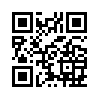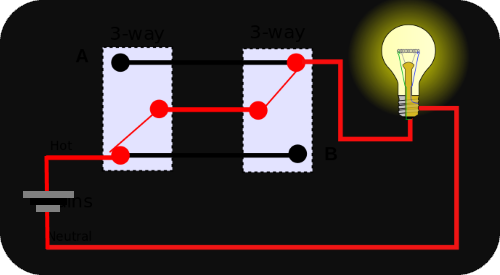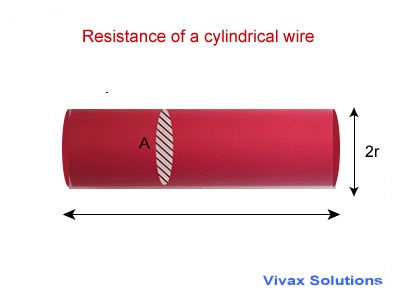The Book of Electricity
This is a comprehensive tutorial on electricity, covering all the major topics that come under GCSE, iGCSE and A-Level specifications in the UK and the Commonwealth - for all major exam boards: AQA, OCR, Edexel, MEI. In other countries, this can be used for senior High School children.
The tutorial consists of animations and images to illustrate the concepts very clearly.
There are plenty of examples which have been worked out for you to understand the nitty-gritty of electricity without any hindrance.

You will learn the following in this tutorial:
- Static Electricity - its presence in nature and how to generate them.
- Static electricity in preventing thunderstorms - lightning conductors.
- Dynamic electricity - current electricity - and the concept of potential
- Ohm's Law, its verification and resistance of a metal.
- EMF, voltage, internal resistance and power of gadgets.
- Series and Parallel connections.
- Kirchhoff's Laws and their applications in real life.
- Series and Parallel circuits.
- Potentiometer and domestic circuits.
- Cathode Ray Oscilloscope - CRO - and its uses.
- Alternating Current - AC - and Direct Current -DC
- Logic Gates, burglar making alarm and frost alarm by using them.
What is an electric current?
The flow of electric charges is normally known as a current. There are two types of charges. They are:
1) Positive Charges - protons
2) Negative Charges - electrons
Certain substances, known as conductors, for instance, have free electrons
in them, moving in random directions at slower speeds. If such a conductor is connected to
a cell, or battery, they start moving at very high speed in a certain direction. We call it an electric current.
How do metals get electrons?

The electrons of the atoms inside a metal are much more loosely attracted to the nuclei than those of non-metals. Therefore, when the electrons
of a metal are provided with an extra dose of energy, they become highly active and break free from the atoms - and then come out of them. That's how
metals get free electrons.
The electrons of insulators, on the other hand, are tightly bound to their corresponding nucleus. Therefore, even if we provide them with a substantial
amount of energy, it is highly unlikely that they would break free from the atoms. It means, insulators do not have free electrons inside them.
Therefore, they are not in a position to form electric currents, even if we connect them to batteries.
Electricity in Nature
Our forefathers suspected a certain connection between lightning and electricity, with the progress of written knowledge, thanks to the steady increase in the exchange of ideas.
In 1752, Benjamin Franklin, the American statesman - scientist and author - carried out an experiment to test the connection and made it clear that
there was a connection, a feat which nearly cost him his life.
His observation led to the invention of lighting conductor as we know of it today, which saves a lot of lives
during thunderstorms, as it bears the brunt of the lethal effect, while shielding the occupants of vulnerable buildings.
In the animation, which may look slightly comical, both the danger of carrying an umbrella during a thunderstorm and survival, if the right steps - the conductor that hangs down from its border - are taken, are depicted!
Lightning Conductors are installed at the top of tall buildings and even church spires. It is an amazingly simple device that protects thousands of lives from the bolts from the blue every day.
When thunder clouds are around, they usually have negative charges on the side facing the Earth and positive charges
on the opposite side. As a result, positive charges are induced on the objects on the ground. These induced charges prefer pointed
corners to flat corners.
In the above animation, the induced charges tend to accumulate at the tip of the umbrella. These charges attract a very intense
stream of electrons from the ground - a heavy current - through the metal cable that hangs down from the umbrella. It is a bolt of lightning.
Since it takes the path of least resistance, the user, at least in theory, survives. The arrangement is a form of lighting conductor.
Please don't try this at home!
Food for Thought:
In tropical countries, coconut trees often are hit by lightning during thunder storms. They are tall trees. Their heights, however, have nothing
to do with the development. How do you account for the phenomenon?
Answer
Semiconductors
In semiconductors, there are no free electrons either. However, if they are heated, the electrons in the outermost shell can come out and the substance, in turn,
get free electrons. Therefore, the semiconductor behaves as a conductor, at high temperature; the higher the temperature, the more free
electrons it gets.
Electric charge is measured in a unit called, Coulomb(C).
Charge of an electron = 1.6 X 10-19C
Electric Current
The amount of charge that goes past a point in a circuit in a unit time is called the current.

I = Q / t
Units: I = Coulomb / seconds = Cs-1 = ampere(A)
E.g.1
The current through a conductor is 2A. Find the charge that passes through it in an hour.
I = Q / t
2 = Q / 1*3600 => Q = 7200C.
E.g.2
The number of electrons that pass through a certain point in a metal is 20 X 104 in 16 seconds. Find the current.
I = Q / t
Total charge = 20 X 104 * 1.6 X 10-19 = 3.2 X 10-14C
So, I = 3.2 X 10-14 / 16
I = 2.0 X 10-15Amp.
Resistance of a wire
The resistance of a wire depends on three factors. They are:
1) length
2) cross sectional area
3) temperature

The longer the wire, the greater the resistance.
The thicker the wire, the less the resistance.
The greater the temperature, the less the resistance.
∝ l
∝ 1/A
R = K l/A
K = ρ = resistivity
So, R = ρ l/A
You can see how above factors affect the resistance of a wire in the following animation - interactively.
Definition of Resistivity - ρ
The resistance of a wire with unit cross sectional area and unit length is called the resistivity of the substance of the wire.
Units
ρ = RA/l = Ωm2/m = Ωm
The following table shows the resistivity of some metals.
| Metal | Resistivity - Ωm |
|---|
| Silver | 1.59x10-8 |
| Nickel | 6.99x10-7 |
| Iron | 1.0x10-7 |
| Copper | 1.68x10-8 |
| Lead | 2.2x10-7 |
| Tungsten | 5.69x10-8 |
Please note that the temperature can affect all three factors of a resistor: length, area and resistivity. Therefore, the resistance is also dependent of the temperature.
E.g.
1) The copper wire that connects the lightning conductor to the ground, is a thick one. It reduces the resistance so that
the massive electric current, in the event of a thunder strike, passes through the wire to the ground quickly.
2) The heating element in a hair dryer is long and thin - an arrangement to increase the resistance, which, in turn increases the rate of heat generation.
Finding a good text book - without space-devouring silly cartoons - for physics can be as challenging as mastering the subject.
So,Vivax Solutions highly recommends the following books for you to complement what you learn here:Practice in Physics contains a huge collection of problems for practising; A-Level physics is a great text book to get an in-depth understanding of every major topic in physics.
E.g.1
The dimensions of a metal cuboid are 6cm, 4cm and 2cm respectively. Find its resistance, if the resistivity is 1.2 X 10-8Ωm and the current enters through the smallest surface.
R = ρl/A
A = 8 x 10-4m2
l= 6 x 10-2m
R = 1.2 X 10-8 x 6 x 10-2 / 8 x 10-4
R = 9 X 10-7Ω
E.g.2
The radius of a wire is 2cm and the length is 8cm. If the resistivity is 3x10-6
, find the resistance of the wire.
A = πr2 = 3.142*22*10-4 = 12.562*10-4
R = ρl/A = 3X10-6*8*10-2/12.562*10-4 = 1.9x10-4Ω.
E.g.3
The resistance of a wire is 4Ω. It is folded up and then twisted in the middle. What is its new resistance?
When it is folded up and then twisted, the cross sectional area gets doubled and length gets halved.
So, 4 = ρl/A for the first wire
R = ρ(l/2)/2A for the second wire
4/R = 4
R = 1Ω.
Next